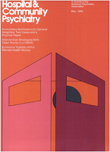Deinstitutionalization: Who Is Left Behind?
Abstract
A study of the demographic and clinical characteristics of 137 patients in a state hospital in Massachusetts on a single day in March 1977, well after the state's massive deinstitutionalization program was in effect, showed that the patients who remained in the hospital needed a high level of care, lacked social relationships, were acutely psychotic, or were dangerous to themselves or to others. The author compares this patient population with patients in all other state mental hospitals in Massachusetts and those in the United States. He believes that an answer to the question "Who is left behind?" is essential for state hospital staff members who must treat these patients and is also important for those planning community programs.
Access content
To read the fulltext, please use one of the options below to sign in or purchase access.- Personal login
- Institutional Login
- Sign in via OpenAthens
- Register for access
-
Please login/register if you wish to pair your device and check access availability.
Not a subscriber?
PsychiatryOnline subscription options offer access to the DSM-5 library, books, journals, CME, and patient resources. This all-in-one virtual library provides psychiatrists and mental health professionals with key resources for diagnosis, treatment, research, and professional development.
Need more help? PsychiatryOnline Customer Service may be reached by emailing [email protected] or by calling 800-368-5777 (in the U.S.) or 703-907-7322 (outside the U.S.).



